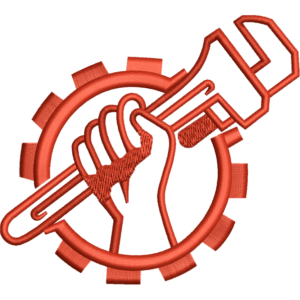Since it very well may be confounding now and again to switch a picture over completely to a weaving record, particularly for novices, certain individuals like to have it done expertly as opposed to attempting to do it without anyone’s help. Obviously, if you need to attempt to do it without anyone else’s help, you will maintain that should do it the least expensive way imaginable to convert png to embroidery file.
Changing pictures over completely to weaving documents is finished through a digitizing program. These projects permit pictures to be digitized with the goal that the machine can all the more effortlessly understood them. A portion of these projects truly do cost cash. Yet, fortunately, there are programs accessible that permit you to utilize them free of charge.
Now and again, the program and its highlights are all totally free come what may. Different times, a free preliminary is offered and afterward you need to pay to utilize it. Or then again, a few highlights might be free, while further developed elements might cost cash.
Here are the absolute best and most famous free weaving digitizing programs (click on each connect to see key elements):
Ink/Stitch-totally free
Without sewart preliminary
Sans embird preliminary
Sans hatch preliminary
As may be obvious, Ink/Stitch is presumably the best by and large decision to use for switching a picture over completely to a weaving record. It has no free preliminary and is in every case totally free, in addition to it has a great many elements for something other than changing over pictures by Vector Art Services.
Will All Image Files Be Converted To Embroidery Files?
With regards to picture records, there are a few unique ones. In fact, they all can be changed over completely to weaving records, however some are more hard to do than others and may not decipher without making extra strides.
Pictures come in two unique structures: pixel-based and vector-based. Pixel-based pictures contain significantly more data and are more reasonable and three-layered. They likewise contain more tones. Vector-based pictures have clean lines, yet they can be level apparently and frequently don’t contain however many tones as pixel-based pictures.
Since they contain such countless varieties, pixel-based pictures are more diligently to switch over completely to weaving documents. Vector-based pictures are simpler. In a ton of cases, you should change over a pixel-based picture to a vector-based picture before you can switch it over completely to a weaving record (similarly as with Ink/Stitch)
Here are a few normal instances of picture records.
JPG/JPEG
This is a pixel-based picture document and is one of the most widely recognized picture records, particularly for pictures that you took yourself on a telephone or camera and transferred to the PC or for pictures you downloaded off the web.
The justification for this is that PCs screens can uphold a large number of various varieties, so the whole picture, complete with every one of the various tones and subtleties in a JPG/JPEG record, should be visible on the screen. This kind of picture document can likewise be compacted without losing any of the picture quality.
JPG/JPEG picture records are in many cases the most well known picture document that is changed over completely to weaving. However, harder to switch over completely to weaving fl as a result of the multitude of varieties they contain and in light of the fact that they frequently have a foundation. A picture with various varieties would mean more string changes for the weaving machine. Also, the foundation would need to be eliminated from the picture prior to digitizing it.
It’s anything but a troublesome interaction to eliminate the foundation from a picture. All things considered, it generally requires extra projects except if you have any desire to save it as an alternate picture document prior to changing over it.
PNG
PNG picture documents are likewise pixel-based, however this is the sort of record utilized for advanced work of art and things like logos. It upholds a great deal of varieties however doesn’t have a three-layered impact in the manner that visual pictures do.
PNG records likewise will quite often have a straightforward foundation. They are frequently more straightforward to switch over completely to picture documents since you don’t need to invest additional energy eliminating the foundation from the picture. You can save a JPG picture as a PNG picture to eliminate the foundation prior to switching it over completely to a weaving document.
GIF
A GIF picture is another normal pixel-based design, yet it doesn’t uphold however many tones as JPG and PNG pictures. GIFs just help 256 varieties, so you can diminish the quantity of varieties in a picture by saving it as a GIF. GIFs likewise support foundation straightforwardness, so you can likewise save a JPG picture as a GIF to diminish the variety and eliminate the foundation.
Vector Image
A vector picture (most regularly a SVG document) is the simplest kind of picture to switch over completely to a weaving record since they are comprised of clean lines and level tones. It is a lot simpler to digitize a vector picture along these lines. However, you can transform a JPG picture into a vector picture by utilizing extra free programming. You should do this with Ink/Stitch as your free program since it is vector-based.

